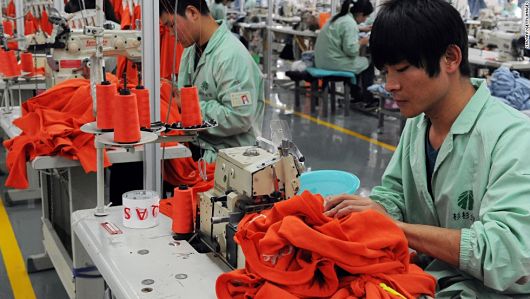The Plight of Chinese Migrant Workers

Every year, around the Chinese New Year, China experiences the world’s largest human migration. About 700 million people gather at boat landings, train stations and airports to return home; during this holiday period, 2,265 trains per day will carry this plethora of people across the country.
A majority of these travelers are in fact migrant workers who are returning home after working in China’s crowded but economically thriving cities. For many of these laborers, this will be their only visit home before they have to return to their place of employment for the rest of the year.
Traditionally, life for these millions of migratory workers has not been easy. While many leave their rural hometowns for greater economic opportunities in China’s booming metropolises, they often find more than they bargain for.
A study conducted by Cheng Yu at Sun Yat-sen University in Guangzhou surveyed the mental health of 807 migrant workers from Shenzhen and also saw Cheng discussing personal experiences with 60 of them. The study found that 58.8 percent of participants suffered from depression. Another 17 percent experienced anxiety, while around 4.6 percent had considered suicide.
The issue of mental health among Chinese migrant workers became widely apparent in 2010 after a series of suicides at a Foxconn manufacturing facility in Shenzhen. The company had assembled components for Apple products.
For migrant workers who must transition from rural life to city living without the support of their families, the chance of developing mental illnesses is much greater. They also face greater inequality through China’s hukou system.
The hukou essentially serves as a domestic passport which distinguishes between those of rural backgrounds and urban backgrounds. Unfortunately, migrant workers have to pay more for social services such as healthcare and education, which they could expect for little expense in their rural hometowns. They will frequently experience wage disparities and discrimination.
In 2008, a study found that urban workers earned around 1,000 yuan per month, while their migrant counterparts earned only 850 yuan. Most were expected to work around 11 hours per day for 26 days a month. Another study found that migrant laborers worked 50 percent more hours than their urban counterparts, yet in turn received 60 percent less in pay.
In order to improve their working conditions, laborers have recently taken to the streets in protest. In 2011 the country experienced 185 labor protests and things have only escalated since then: last year, 1,300 labor protests took place.
Even though the Chinese government guarantees workers’ rights under a 1995 labor agreement, workers must seek approval for strikes through the All-China Federation of Trade Unions, a government entity. If they don’t coordinate through the federation, they can face arrest.
Yet these arrests are usually only based on disorderly conduct and not for the actual strikes themselves. Wu Gaijin, a worker representative from Shenzhen, was detained for an entire year without a conviction. The government charged him with disrupting traffic.
However, life for laborers has been gradually improving. China has recently worked towards loosening restrictions on the hukou system in an attempt to lessen the disparity between urban and rural workers. Furthermore, individuals such as Cheng have advocated for required mental health testing at work facilities and for providing employees with a mental health support line to mitigate suicides and depression.
As China grows larger and its cities expand, changes such as these will have to be made in order to make its labor force sustainable and healthy.
– Andrew Logan
Sources: Business Insider, CNN 1, CNN 2, ILO, NPR, PBS
Photo: CNN
